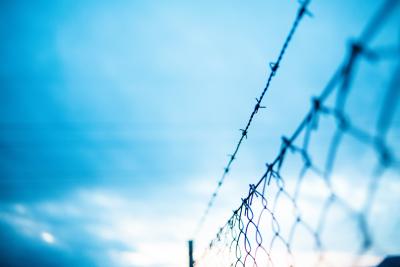New Research on the Overlapping Forms of Violence Experienced by Indigenous Young People and Refugees in Carceral Spaces in Australia
Posted
Time to read

Australia is well-known for its racialised practices of incarceration. In 2020, Indigenous young people represented 48% of the overall youth detention population despite only representing 6% of the total population of young people in Australia. This incarceration rate becomes even more stark when the focus is solely on the Northern Territory, a jurisdiction in Australia, where Indigenous young people consistently represent well above 90% of the total number of young people in detention.
The Australian state engages in similarly violent carceral practices to incarcerate refugees. The Migration Act (1958) establishes the mandatory detention of non-citizens without a valid visa. This period of detention need not be determined and can be indefinite. Immigration detention is not officially imprisonment, but it is clear that immigration detention centres are inherently carceral spaces that rely on punitive forms of control.
This propensity towards incarceration is also connected to past and continuing colonial structures. As Rule Brown and Ironfield suggest, incarceration operates as a ‘colonial function…to further the erasure of First Nations people’. Giannacopoulos and Loughnan similarly establish carcerality as a form of control over refugees that is firmly embedded within Australia’s settler-colonial logic, where the carceral expansion of the Australian state is justified through the imagination of terra nullius.
In an article just published in Critical Criminology, I further develop the violent connections between these practices of incarceration. I explore how the harms experienced by young Indigenous people in prison in the Northern Territory are insidiously similar to the harms experienced by refugees imprisoned in immigration detention both onshore and offshore. Drawing on qualitative analysis of publicly accessible first-hand accounts, I examine these experiences of harm as, in Achille Mbembe’s terms, a living death.
In my findings, I merge aspects of Mbembe’s necropower and Foucault’s disciplinary power to illustrate how racism and carcerality intersect to subject incarcerated Indigenous young people and refugees to four overlapping expressions of violence: structural violence, epistemic violence, physical violence and brutality, and disciplinary violence. I suggest that it is the complex overlapping of these multiple forms of harm that creates an experience of living death. All four mechanisms, exist as part of the ongoing structural violence of settler-colonialism, operate epistemically to erase identities, oftentimes operate in physical ways, and, work disciplinarily to control and regulate. As I discuss in the article, by engaging existing theoretical perspectives to reconceptualise the experiences of these two groups as a living death, I build on existing critical scholarship to develop a critique of carceral systems.
It is also important to acknowledge that I am a white settler who has been advantaged by the Australian settler-colonial state. Although this article cannot be separated from my position of privilege, I recognise Indigenous sovereignty and adopt a decolonising perspective that works to move beyond what Gomeroi poet and researcher Alison Whittaker terms, a ‘racist silence’ that we practice in Australia on a national scale.
What is clear is that challenges to this racist silence are urgently needed. During the COVID-19 pandemic refugees have continued to be detained in hotels and immigration detention centres without appropriate health measures. There has also been a recent reversal of legal reforms that arose out of the Royal Commission and Board of Inquiry into the Protection and Detention of Children in the Northern Territory (Royal Commission). This reversal of reforms has been linked to the increasing imprisonment of young Indigenous people in the Northern Territory and by the end of 2021 youth detention numbers were the highest they had been since 2017.
In this article, I importantly shift the focus away from law and regulation. Instead, I broaden the theoretical tools available to criminologists and other critical scholars, and encourage structurally located challenges to this state-sanctioned violence.
Share